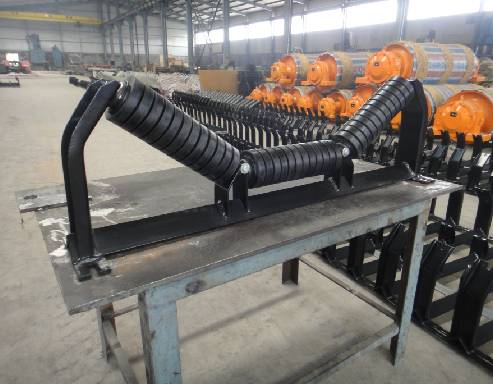 Afrikaans
Afrikaans  Albanian
Albanian  Amharic
Amharic  Arabic
Arabic  Armenian
Armenian  Azerbaijani
Azerbaijani  Basque
Basque  Belarusian
Belarusian  Bengali
Bengali  Bosnian
Bosnian  Bulgarian
Bulgarian  Catalan
Catalan  Cebuano
Cebuano  Corsican
Corsican  Croatian
Croatian  Czech
Czech  Danish
Danish  Dutch
Dutch  English
English  Esperanto
Esperanto  Estonian
Estonian  Finnish
Finnish  French
French  Frisian
Frisian  Galician
Galician  Georgian
Georgian  German
German  Greek
Greek  Gujarati
Gujarati  Haitian Creole
Haitian Creole  hausa
hausa  hawaiian
hawaiian  Hebrew
Hebrew  Hindi
Hindi  Miao
Miao  Hungarian
Hungarian  Icelandic
Icelandic  igbo
igbo  Indonesian
Indonesian  irish
irish  Italian
Italian  Japanese
Japanese  Javanese
Javanese  Kannada
Kannada  kazakh
kazakh  Khmer
Khmer  Rwandese
Rwandese  Korean
Korean  Kurdish
Kurdish  Kyrgyz
Kyrgyz  Lao
Lao  Latin
Latin  Latvian
Latvian  Lithuanian
Lithuanian  Luxembourgish
Luxembourgish  Macedonian
Macedonian  Malgashi
Malgashi  Malay
Malay  Malayalam
Malayalam  Maltese
Maltese  Maori
Maori  Marathi
Marathi  Mongolian
Mongolian  Myanmar
Myanmar  Nepali
Nepali  Norwegian
Norwegian  Norwegian
Norwegian  Occitan
Occitan  Pashto
Pashto  Persian
Persian  Polish
Polish  Portuguese
Portuguese  Punjabi
Punjabi  Romanian
Romanian  Russian
Russian  Samoan
Samoan  Scottish Gaelic
Scottish Gaelic  Serbian
Serbian  Sesotho
Sesotho  Shona
Shona  Sindhi
Sindhi  Sinhala
Sinhala  Slovak
Slovak  Slovenian
Slovenian  Somali
Somali  Spanish
Spanish  Sundanese
Sundanese  Swahili
Swahili  Swedish
Swedish  Tagalog
Tagalog  Tajik
Tajik  Tamil
Tamil  Tatar
Tatar  Telugu
Telugu  Thai
Thai  Turkish
Turkish  Turkmen
Turkmen  Ukrainian
Ukrainian  Urdu
Urdu  Uighur
Uighur  Uzbek
Uzbek  Vietnamese
Vietnamese  Welsh
Welsh  Bantu
Bantu  Yiddish
Yiddish  Yoruba
Yoruba  Zulu
Zulu Considerations for Effective Lagging on Wing Pulley Systems in Industrial Applications
Understanding Wing Pulley Lagging Importance and Benefits
Wing pulleys are a critical component in various industrial applications, particularly in conveyor systems. They feature a design that helps mitigate material buildup and reduce excessive wear, making them an essential choice in environments with heavy-duty material handling. However, one significant aspect often overlooked in the discussion of wing pulleys is lagging. In this article, we will explore what wing pulley lagging is, its advantages, and why it is indispensable in maintaining the efficiency of conveyor systems.
What is Wing Pulley Lagging?
Lagging refers to the rubber or ceramic material applied to the surface of the pulley. In the case of wing pulleys, lagging serves multiple purposes. It enhances the grip between the pulley and conveyor belt, which prevents slippage during operation. This is particularly important in applications where the conveyor system handles materials that exert significant force on the pulley.
There are different types of lagging materials available, including rubber and ceramic options, each with its specific benefits and suitability depending on the operational environment. Rubber lagging is generally favored for its good traction properties and ability to absorb shock, while ceramic lagging is beneficial in high-wear applications due to its robust resistance to abrasion.
Benefits of Wing Pulley Lagging
1. Enhanced Traction One of the primary benefits of lagging is that it significantly improves the traction between the pulley and the conveyor belt. This reduced slippage leads to a smoother operation, which is vital for maintaining consistent throughput and minimizing downtime.
wing pulley lagging

2. Extended Equipment Life Wing pulleys without lagging can suffer from rapid wear due to friction and abrasions from the material being transported. By applying lagging, the wear and tear on the pulley is substantially reduced, extending its operational life and minimizing the need for frequent replacements.
3. Reduced Maintenance Costs Lagging not only prolongs the life of wing pulleys but also reduces maintenance costs. By having a reliable and durable surface on the pulley, companies can expect fewer breakdowns, which means lower repair and maintenance expenses over time.
4. Noise Reduction The application of lagging can also help reduce operational noise. This is particularly important in environments where noise regulations are strict or where worker safety and comfort are a priority.
5. Improved Material Handling Lagging can prevent material spillage and enhance the overall efficiency of the conveyor system. This is especially crucial in industries such as mining, agriculture, and manufacturing, where material loss can lead to significant financial implications.
Conclusion
In conclusion, wing pulley lagging is an essential aspect of conveyor system efficiency and reliability. By improving traction, prolonging the life of equipment, and minimizing maintenance costs, lagging plays a pivotal role in optimizing the performance of wing pulleys. As industries continue to evolve and seek more efficient material handling solutions, the importance of implementing quality lagging materials cannot be overstated. By investing in proper lagging for wing pulleys, companies can enhance productivity, reduce operational costs, and promote a safer working environment. Whether you are involved in mining, agriculture, or manufacturing, considering wing pulley lagging could be the key to unlocking improved efficiency in your operations.
-
Revolutionizing Conveyor Reliability with Advanced Rubber Lagging PulleysNewsJul.22,2025
-
Powering Precision and Durability with Expert Manufacturers of Conveyor ComponentsNewsJul.22,2025
-
Optimizing Conveyor Systems with Advanced Conveyor AccessoriesNewsJul.22,2025
-
Maximize Conveyor Efficiency with Quality Conveyor Idler PulleysNewsJul.22,2025
-
Future-Proof Your Conveyor System with High-Performance Polyurethane RollerNewsJul.22,2025
-
Driving Efficiency Forward with Quality Idlers and RollersNewsJul.22,2025





























